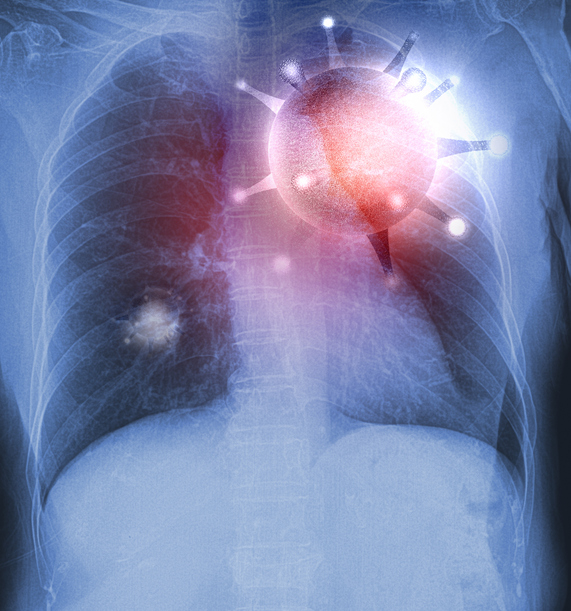What does it mean to be a COVID-19 Long-Hauler?
What does it mean to be a COVID-19 Long-Hauler?
Some of the serious aspects of COVID-19 are long-term symptoms that persist for a significant period after SARS-CoV-2 infection and acute symptoms have apparently resolved. People experiencing these conditions have been called “long-haulers” and are a consequential proportion of those infected with SARS-CoV-2. Particularly, many patients who recovered not only from the severe disease, COVID-19, but also mild and moderate disease, have experienced long-term consequences. In this context, we discuss the most common persistent symptoms and general causative factors of long-haul COVID-19.
Symptoms of Long-Haul COVID-19

The COVID-19 pandemic has lasted for more than 9 months, and we are continuously learning new information about the symptoms of long-haul COVID-19. In general, the symptoms are remarkably varied and can last months, or more. A thorough catalog of 98 different symptoms is available here. They can include some, or all, of a group including severe fatigue, shortness of breath, erratic heart rates, dizziness, fatigue, headaches, fluctuations in blood pressure, and cognitive/memory problems. This suggests systemic infection of the virus to a variety of different organs, although whether this is mediated by SARS-CoV-2 itself or by the subsequent immune response, is an open question. At least, some are likely the consequences of organ damage mediated by inflammation or abnormal blood clotting. Possibly, virus would persist in immunologically sequestered tissue sites, which may not be detected by the usual tests for RNA or antigen.
There is also variability in duration of post-COVID-19 symptoms from several weeks to many months or longer. The CDC reported that outpatients (35% of cases) still experienced symptoms 2-3 weeks after testing, with 20% of those 18 to 34 years old reporting similar issues. Increasing age, however, corresponded with an increasing incidence. In this survey, the most common symptoms were fatigue, cough, and headache. An Italian study (1) reported that 87% of COVID-19 patients discharged from the hospital reported fatigue and shortness of breath two months after the onset of the original symptoms. Similarly, some survivors of SARS and MERS, two similar coronavirus diseases, have experienced fatigue for years after viral infection.
In general, the symptoms are remarkably varied and can last months, or more. They can include some, or all, of a group including severe fatigue, shortness of breath, erratic heart rates, dizziness, fatigue, headaches, fluctuations in blood pressure, and cognitive/memory problems.
The CDC reported that outpatients (35% of cases) still experienced symptoms 2-3 weeks after testing, with 20% of those 18 to 34 years old reporting similar issues. Increasing age, however, corresponded with an increasing incidence.
Neurological manifestations include cognitive problems, tremors, limb stiffness, confusion, loss of taste and smell, and irritability. If the underlying factor is inflammation, these symptoms may resolve as time goes by.
The ranges of symptoms are sufficiently diverse in that their direct underlying causes may differ due to the differences in viral loads and tissue distribution and in the subsequent immune responses. Let’s consider a few factors in detail. Recently, postural orthopedic tachycardia syndrome (POTS) has gained attention (2). POTS may be associated with autoantibodies to adrenergic receptors(3), suggesting that inappropriate immune response to SARS-CoV-2 can cause damage to the autonomic nervous system. POTS is associated with greatly elevated heart rates resulting from small movement or standing creating dizziness and fatigue. It is diagnosed by immobilizing the patient on a tilting table and measuring changes in heart rate between the horizontal and vertical. While not unique to COVID-19, it apparently can be triggered by the infection with SARS-CoV-2. Although it is treatable, recovery process can be lengthy, and the condition may never completely resolve.
Cardiovascular Issues

Another long-term effect is represented by cardiovascular issues. These may stem from systemic infection of virus in endothelial cells. Myocarditis has been reported in 29-30% of a group of patients hospitalized with COVID-19 (4). Such outcomes are not restricted to older people; five children aged from 9 to 15 had lingering post-COVID symptoms (i.e., heart palpitations and chest pain) for 6 to 8 months after the infection (5).
Neurological Impacts
Multiple neurological conditions are another cause of post-COVID-19 progression (6). The likeliest cause of the extended symptoms may be a disordered continuing immune response, including inflammatory damage to neural tissue or neurons. These manifestations include cognitive problems, tremors, limb stiffness, confusion, loss of taste and smell, and irritability. If the underlying factor is inflammation, these symptoms may resolve as time goes by.
Other Aspects to Long-Haul COVID-19
There are many other aspects to long-haul COVID-19. Some long-term problems may result from damage to various tissues due to coagulopathies(7, 8). Guillain-Barre syndrome, associated with inflammation and autoimmunity, appears to be another sequela to acute COVID-19(9). Myalgic encephalomyelitis (ME/CFS), a.k.a. chronic fatigue syndrome, appears to be a relatively common after acute COVID-19 illness, although the symptoms are common to some of the other conditions mentioned above. ME/CFS, like some of the other syndromes, seems to be inflammatory/autoimmune in etiology. Notably, ME/CFS, POTs, and Guillain-Barre syndrome are also seen with other viral infections and are thus not unique to COVID-19, although their incidence in other infections seems lower.
Conclusion
There are obviously a greater variety of long-term issues than can be adequately discussed in this type of forum. There are far more questions than there are answers. What are the mechanisms of these conditions? In a practical sense, are some, or all, of these discrete, underlying health conditions (i.e., chronic respiratory illness including asthma, obesity, diabetes or cancer) even though initiated by the same virus? What therapies will be available for prevention or treatment? How long will they persist? Will most of them eventually resolve? They represent a major aspect of COVID-19 that is perhaps not yet widely appreciated. None of this is presently well understood, and it needs to be, as we are, in a sense, in a new world living with, and treating, COVID-19 long-haulers.
- A. Carfi, R. Bernabei, F. Landi, C.-P.-A. C. S. G. Gemelli Against, Persistent Symptoms in Patients After Acute COVID-19. JAMA 324, 603-605 (2020).
- A. Fedorowski, Postural orthostatic tachycardia syndrome: clinical presentation, aetiology and management. J Intern Med 285, 352-366 (2019).
- A. Fedorowski et al., Antiadrenergic autoimmunity in postural tachycardia syndrome. Europace 19, 1211-1219 (2017).
- J. B. Cruz Rodriguez, R. A. Lange, D. Mukherjee, Gamut of cardiac manifestations and complications of COVID-19: a contemporary review. Journal of investigative medicine : the official publication of the American Federation for Clinical Research 68, 1334-1340 (2020).
- J. F. Ludvigsson, Case report and systematic review suggest that children may experience similar long-term effects to adults after clinical COVID-19. Acta Paediatr, (2020).
- A. M. Baig, Deleterious Outcomes in Long-Hauler COVID-19: The Effects of SARS-CoV-2 on the CNS in Chronic COVID Syndrome. ACS Chem Neurosci 11, 4017-4020 (2020).
- M. Panigada et al., Hypercoagulability of COVID-19 patients in intensive care unit: A report of thromboelastography findings and other parameters of hemostasis. J Thromb Haemost 18, 1738-1742 (2020).
- N. Tang, D. Li, X. Wang, Z. Sun, Abnormal coagulation parameters are associated with poor prognosis in patients with novel coronavirus pneumonia. J Thromb Haemost 18, 844-847 (2020).
- S. Abu-Rumeileh, A. Abdelhak, M. Foschi, H. Tumani, M. Otto, Guillain-Barre syndrome spectrum associated with COVID-19: an up-to-date systematic review of 73 cases. J Neurol, (2020).
